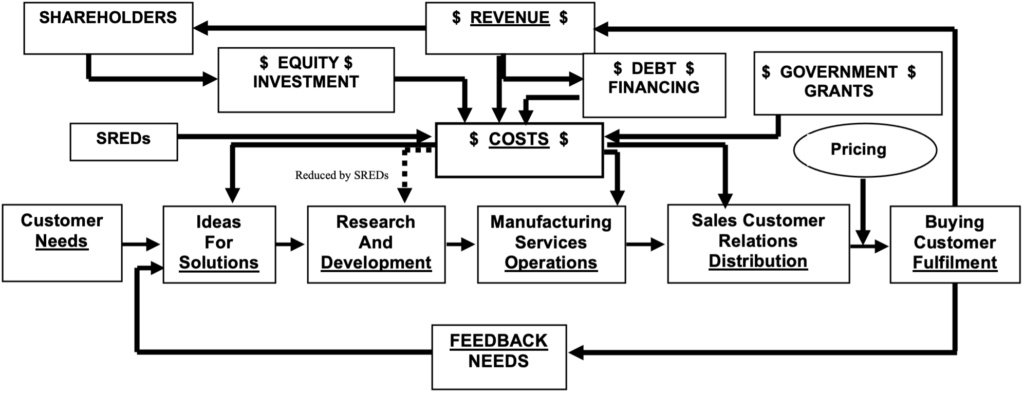From the Publisher: Customers drive innovation
Most models of innovation focus on research at the front end and innovation at the back end, with a mystical process called “commercialization” in the middle. This model is relevant to a tiny percentage of innovations that fuel an economy, such as the development of a new drug based on fundamental research about a particular molecule. The vast majority of innovations that create wealth and social good develop out of customer needs.
My good friend and colleague, Doug Barber, developed an innovation model based on his experience as a co-founder and CEO of Gennum Corporation, a manufacturer of microchips. His experience with innovation is that it involves early and continuous engagement with customers — potential or actual. Customer engagement is the source of ideas for solutions and customer revenue is the engine that drives the innovative firm to succeed. All other sources of financing are dependent upon customer revenue if the firm is to be sustainable — debt interest and principal are paid from revenue, equity investment realizes a return from revenue.
We developed the following diagram to describe his innovation model.
Policy makers and scholars tend to lump research and innovation together in their policies and studies. For example, the annual European Innovation Scoreboard (EIS) “provides a comparative assessment of the research and innovation performance of the EU Member States and the relative strengths and weaknesses of their research and innovation systems.” (European Innovation Scoreboard 2022: Methodology Report - Introduction, p. 5).
While assessing the research strengths of a country is useful, to include these metrics in an innovation scoreboard reinforces the old innovation models that put research as the driving force behind innovation. The essential role of customers and continuous collaboration with them is absent.
A strong customer focus is essential for successful innovation. In today’s global knowledge-based economy, innovative firms must compete globally to be sustainable. Entrepreneurs and firms that can identify a specific niche, which they can develop and dominate globally, have a better chance for success. The goal is to become the number one supplier to the world in a niche that is too small or of little interest to larger players. Sustained success is also possible for the number two or three competitor, but unlikely for firms behind the top three.
This niche strategy can only be achieved by working closely with potential and actual customers from the very start, gathering intelligence to assess the global business opportunity and constantly innovating in collaboration with customers. If global dominance does not emerge as feasible, the entrepreneur needs to pivot to a different opportunity or sell and move on.
R$
| Organizations: | |
| People: | |
| Topics: |
Customers and innovation
|
Events For Leaders in
Science, Tech, Innovation, and Policy
Discuss and learn from those in the know at our virtual and in-person events.
See Upcoming Events
You have 0 free articles remaining.
Don't miss out - start your free trial today.
Start your FREE trial Already a member? Log in
By using this website, you agree to our use of cookies. We use cookies to provide you with a great experience and to help our website run effectively in accordance with our Privacy Policy and Terms of Service.






